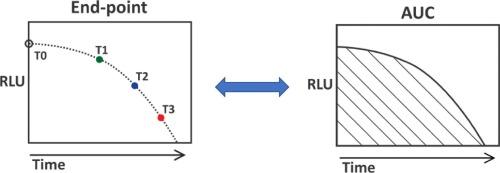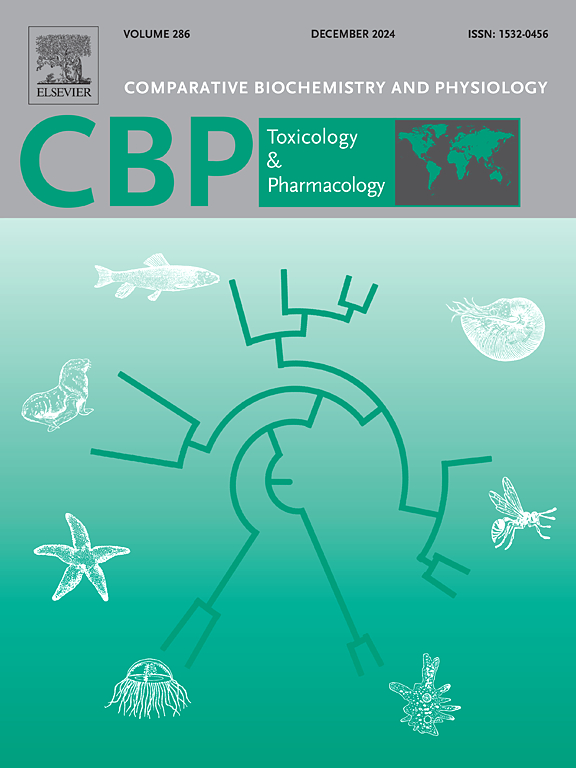利用鲍曼不动杆菌的生物发光抑制水平测量溶液毒性的误区。
IF 4.3
3区 环境科学与生态学
Q2 BIOCHEMISTRY & MOLECULAR BIOLOGY
Comparative Biochemistry and Physiology C-toxicology & Pharmacology
Pub Date : 2024-11-05
DOI:10.1016/j.cbpc.2024.110067
引用次数: 0
摘要
工业活动的有毒排放是一个严重的问题,尤其是在水质方面。因此,制定了 ISO 11348-3 水质评估标准。该方法用于通过抑制弗氏阿里弧菌的生物发光来确定溶液毒性。然而,测量的准确性受单个反应时间点选择的影响。本研究探讨了曲线下面积(AUC)法在水质检测中的实用性,并评估了鱼腥藻如何随着时间的推移对乙醇、丙酮和硫酸锌这三种毒性物质做出反应。结果发现,这三种物质的半最大有效浓度分别为 10.13%、5.02% 和 19.49 mg/L。与单个反应时间点的评估结果相比,AUC 的结果通过捕捉不同毒物浓度和反应时间下的动态变化,全面捕捉了毒物的影响,包括时间依赖效应和激素效应。因此,AUC 分析可减少单个反应时间带来的缺陷,为水质检测提供更准确可靠的评估方法,有助于更好地了解有毒物质对水生环境的影响。本文章由计算机程序翻译,如有差异,请以英文原文为准。

Pitfalls in measuring solution toxicity using the level of bioluminescence inhibition in Aliivibrio fischeri
Toxic emission from industrial activity is a serious problem, particularly with regard to the quality of water. Thus, the ISO 11348-3 standard for assessing water quality has been established. This method is used to determine solution toxicity from the bioluminescence inhibition of Aliivibrio fischeri. However, the accuracy of measurements is influenced by the selection of individual reaction time points. This study explores the utility of the area under the curve (AUC) method in water quality detection and evaluates how A. fischeri responds to three toxicants, namely ethanol, acetone, and zinc sulfate, over time. The half-maximal effective concentrations of these three substances were found to be 10.13 %, 5.02 %, and 19.49 mg/L, respectively. Compared with the results from individual reaction time point assessments, the results of AUC comprehensively captured the effects of the toxicants, including time-dependent effects and hormetic effects, by capturing dynamic changes under different toxicant concentrations and reaction times. Therefore, AUC analysis mitigates the pitfalls associated with individual reaction times and provides a more accurate and reliable assessment method for water quality detection, contributing to a better understanding of the impact of toxic substances on aquatic environments.
求助全文
通过发布文献求助,成功后即可免费获取论文全文。
去求助
来源期刊
CiteScore
7.50
自引率
5.10%
发文量
206
审稿时长
30 days
期刊介绍:
Part C: Toxicology and Pharmacology. This journal is concerned with chemical and drug action at different levels of organization, biotransformation of xenobiotics, mechanisms of toxicity, including reactive oxygen species and carcinogenesis, endocrine disruptors, natural products chemistry, and signal transduction with a molecular approach to these fields.

 求助内容:
求助内容: 应助结果提醒方式:
应助结果提醒方式:


